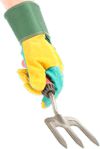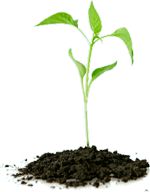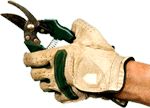Landscape Maintenance
Landscape Maintenance

Landscape maintenance generally consists of watering, weeding, fertilization, pest and disease control, and pruning. All landscapes require some maintenance but with a good design, good planning, good soil preparation, well-designed irrigation, and water-wise plants it is possible to have a beautiful, water efficient landscape with less effort than is required to maintain many conventional landscapes.
Watering

Landscape maintenance generally consists of watering, weeding, fertilization, pest and disease control, and pruning. All landscapes require some maintenance but with a good design, good planning, good soil preparation, well-designed irrigation, and water-wise plants it is possible to have a beautiful, water efficient landscape with less effort than is required to maintain many conventional landscapes.
Weeding

Weeds compete with desirable plants for moisture, nutrients, and space. Eliminating weeds in a garden may take some time and persistence – weeds are most likely to proliferate in a new landscape where the soil has been recently disturbed and the addition of soil amendments may have introduced weed seed. The additional water required to establish new plants also encourages weed growth.
Fertilization

Many low-water use plants perform best in lean soil–in other words soil that is low in organic matter. Plants that require more nutrients however, will benefit from the addition of liquid or slow-release organic fertilizers. The use of organic mulch tends to deplete the soil of nitrogen as it breaks down. Nitrogen is particularly important for plant growth, particularly during the establishment period, and may need to be replaced to optimize growth. The addition of organic material during soil preparation can provide nutrients to the soil that may be adequate for several years. If in doubt a soil test can help you to determine what your soil needs.
Turf grass, with its high demand for water, requires more frequent fertilization than low-water use plants. Fertilization is particularly important in the spring when the grass is actively growing and in the fall when the grass is storing food in the roots for winter. Providing turf with the nutrients it needs to optimize growth can reduce water demand.
Pest and Disease Control

Prevention is the best form of pest and disease control. Diseases or serious pest infestations are more likely to occur when plants are stressed and living in less than ideal conditions. Too much or too little water, crowding, poor air circulation, lack or nutrients or over-fertilization can lead to pest and disease problems in the water-wise garden. Serious infestations may require the assistance of a professional.
Pruning

When plants are spaced with their mature size in mind, pruning can be kept to a minimum. Pruning to reduce the size of a plant that has outgrown its space may result in loss of flowering, and a misshapen plant. When plants are given plenty of space to grow pruning is only necessary for eliminating crossing, dead or broken branches, or removing spent flowers or seed heads.
How to Fix a Leaky Outdoor Faucet
How to Fix a Leaky Outdoor Faucet Equipped with a Frost-Free Valve Stem

